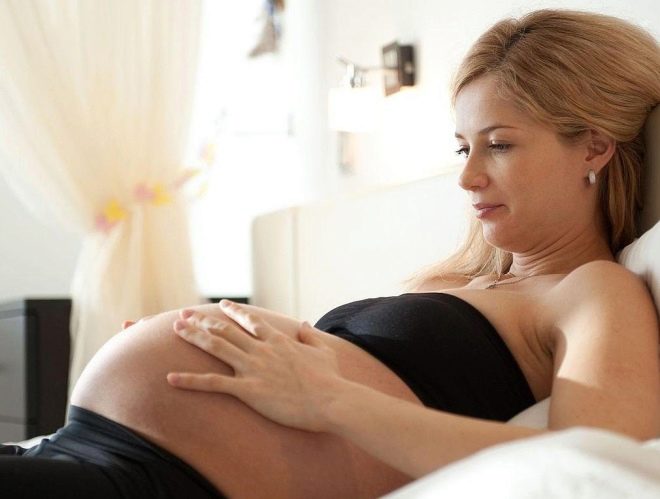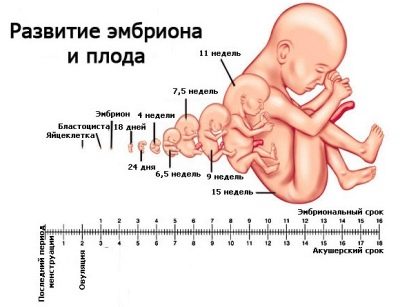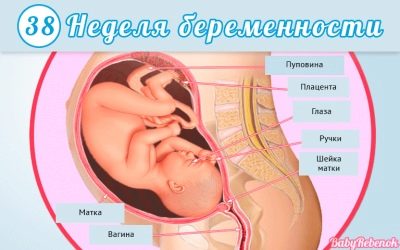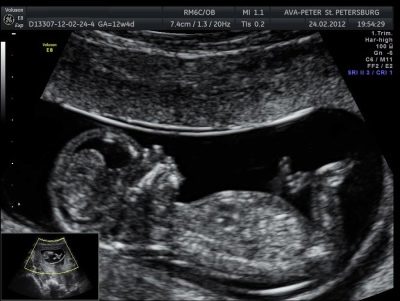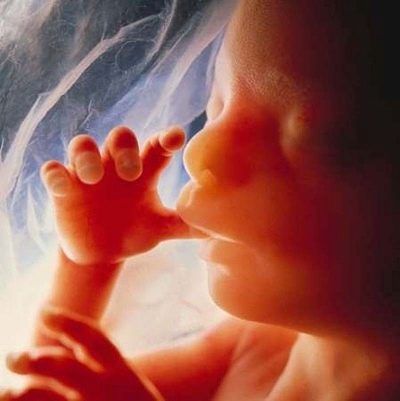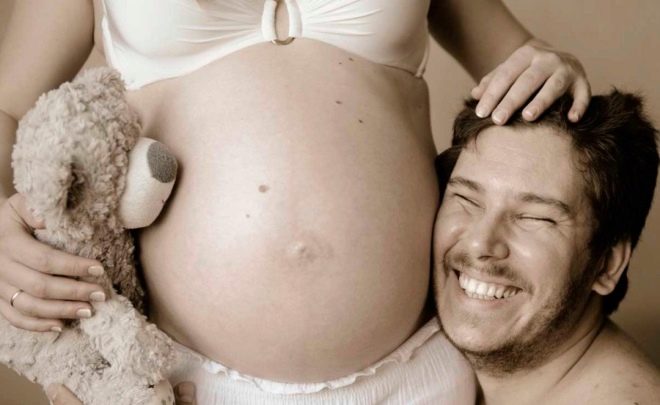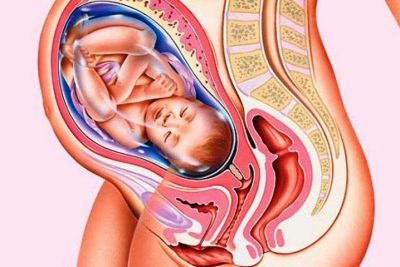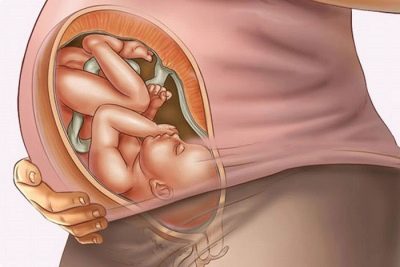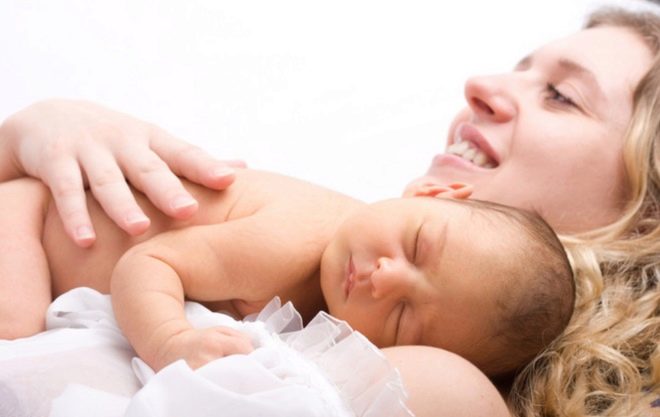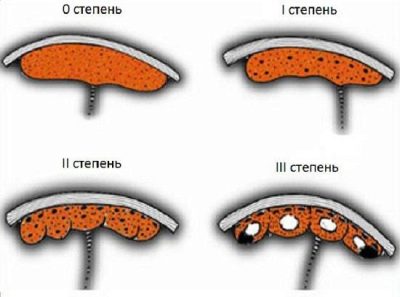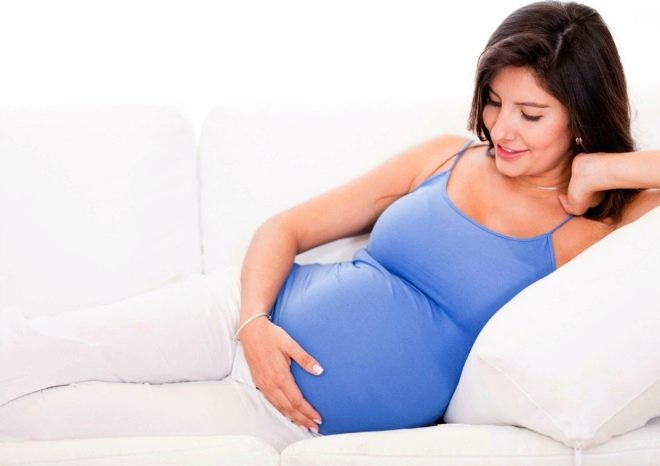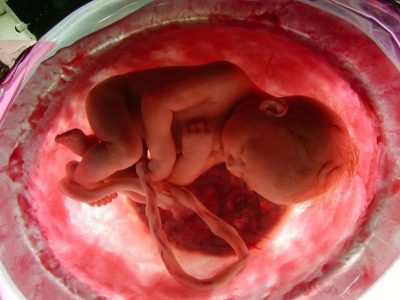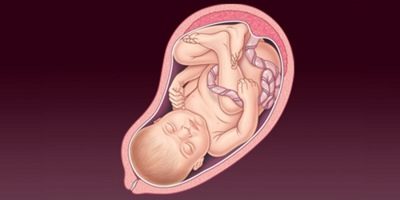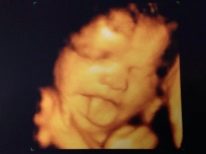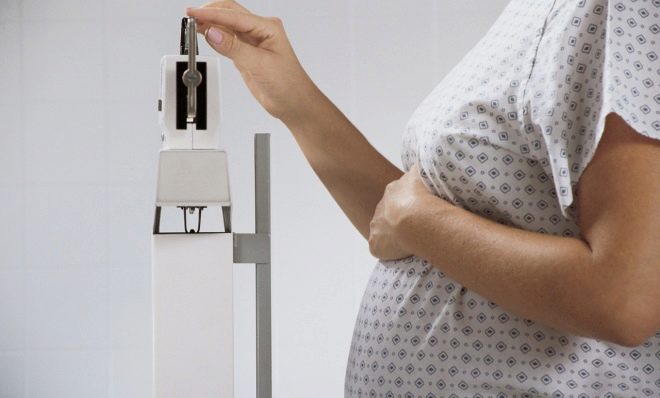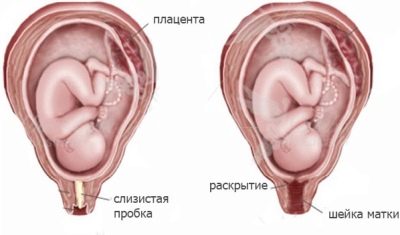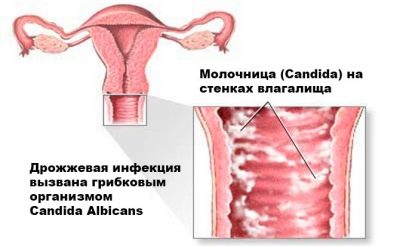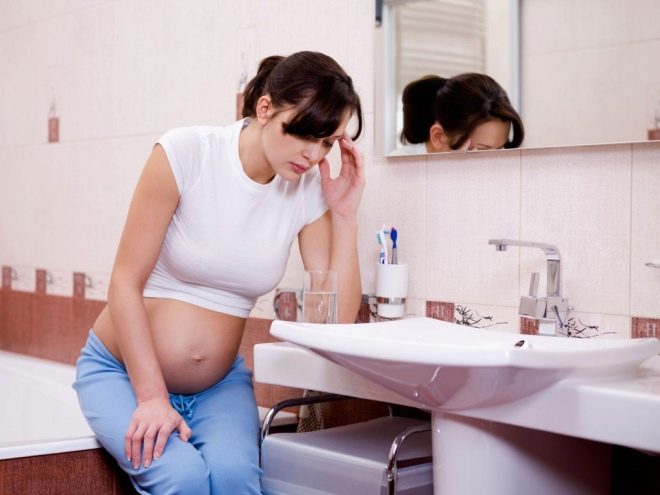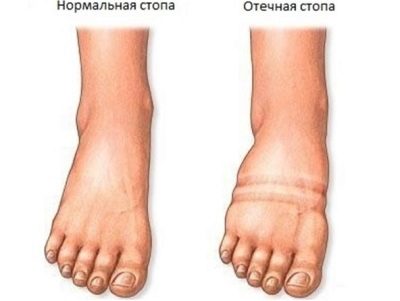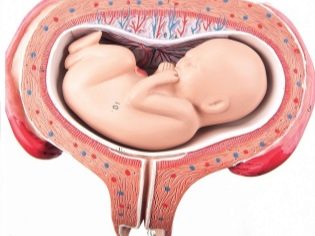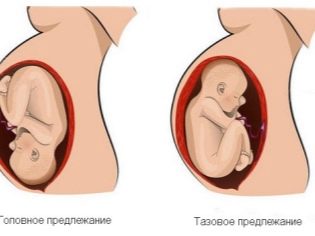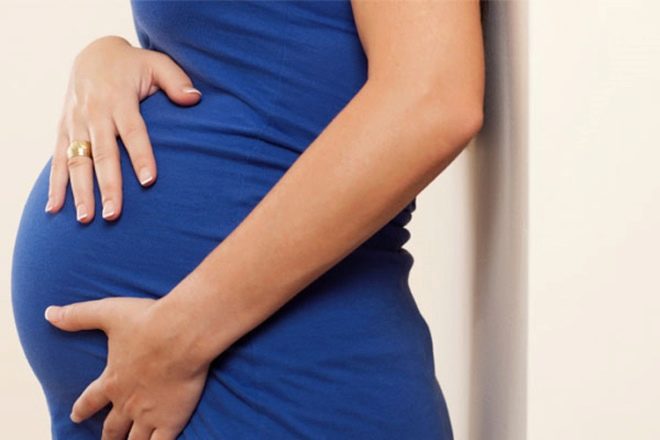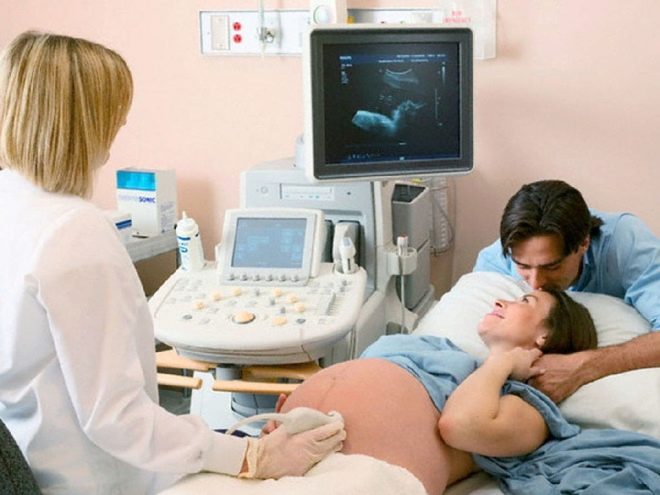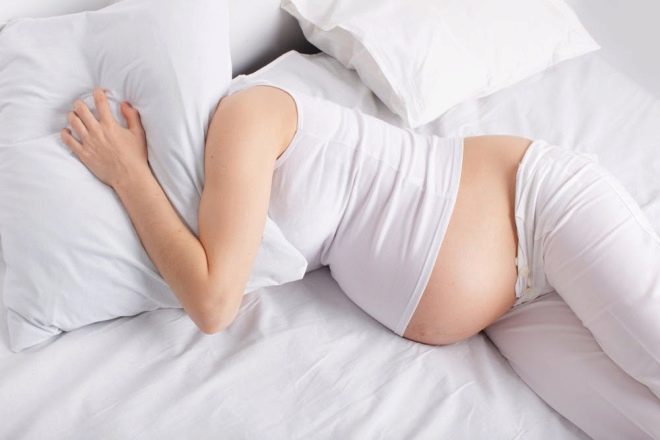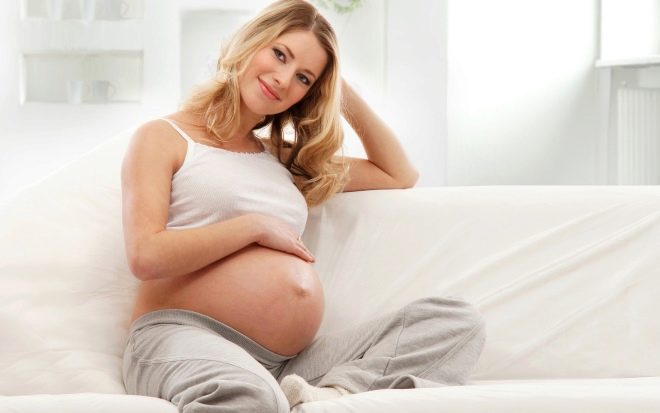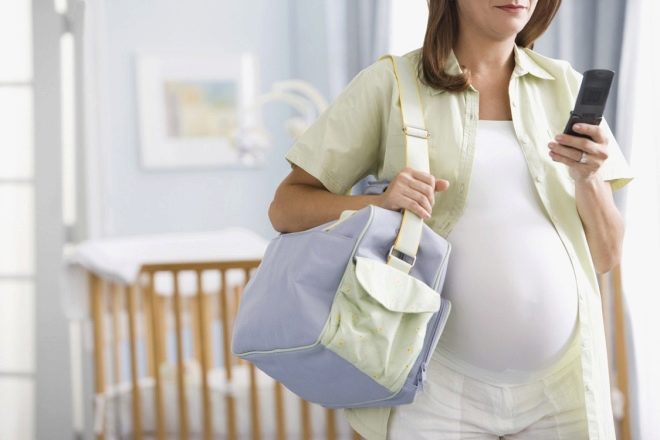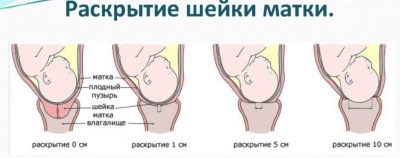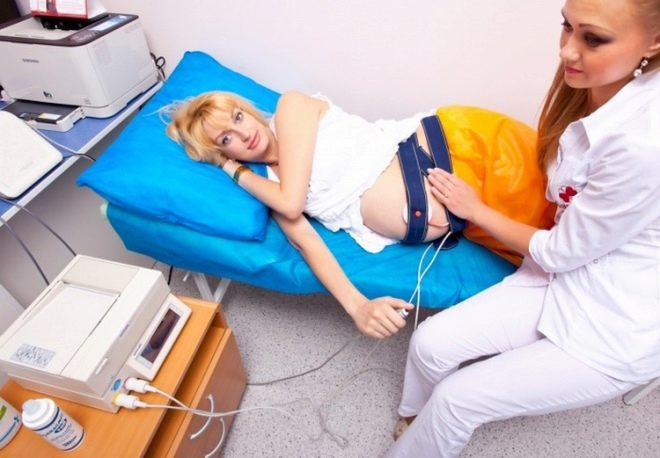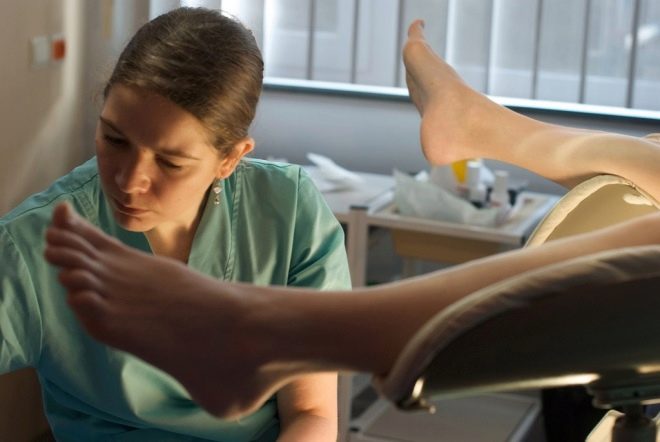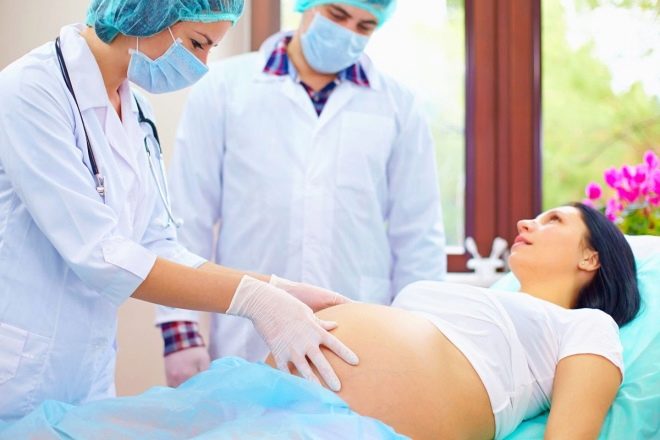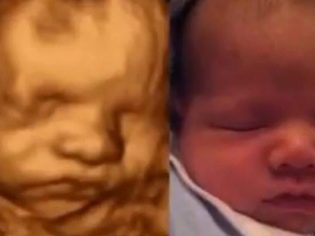38 week of pregnancy: what happens to the fetus and the expectant mother?
At the 38th week of pregnancy, many women are puzzled by collecting things at the maternity hospital, trying to learn as much as possible about how the delivery goes and what they should expect.
Before the date of birth indicated in the exchange card, the expectant mother has two more weeks. In fact, childbirth can begin at any time. Understanding this makes a woman restless and very vulnerable. About what happens to the baby and his mother at week 38, we will describe in more detail in this article.
How many months is it
For a long time of pregnancy, even the expectant mother herself is somewhat lost in terms of term. She is accustomed to the fact that the countdown is in obstetric standards and can not immediately remember how many months it is in a regular calendar.
Recall that obstetric term is the actual period of the fetus, plus two weeks.
Calculus, therefore, comes from the first day of menstruation, preceding conception.
38 obstetric weeks means that the baby exists for exactly 36 weeks. 38th week in calendar terms is exactly 8 months plus 2 weeks. The period of carrying a baby lasts for 266 days.
How was the baby?
Baby on the 38th week is ready for birth. He is fully formed, in recent months he has “recovered”, gained weight, and now, like his mother, he is waiting for the maternal organism to give the “go-ahead” that you can begin the path to this outer world.
Fruit size and weight
The estimated weight of the fetus is determined by ultrasound using mathematical formulas embedded in the program of the scanning device. On average, at the 38th week the weight of babies is about 3 kilograms with a large interval of oscillations.
There are crumbs, which already now weigh 3800 grams, and there are smaller babies, whose body weight barely reaches 2800 grams. Boys weigh a few more girls. On this period, hereditary features of appearance appear: if mom and dad are large, the baby weighs more, if the parents are thin and short, then the child will not be able to boast with a large weight.
The growth of the child at 38 weeks is close to 50 centimeters.. This is also the average value, since there are children whose height at 38 weeks is 56 centimeters, and there are babies who have grown from only the neck to the heels to only 48 centimeters.
Ultrasound on this period will show the following fetometric indicators:
- bipariented head size on average - 94 mm;
- frontal occipital size - 118 mm;
- femur length - 75 mm;
- the diameter of the chest - 101 mm.
A crumb, if he is not going to be born yet, will continue to grow, but at a slower pace than in previous weeks.
Nervous system
At this time, the active development of the nervous system continues. It will not be completed even after childbirth, because the nervous system is the only system of the human body, the formation of which continues after the prenatal period. In the structure of the brain and spinal cord, nothing new happens - physiologically, their formation is completed, but every day new neural connections, new neuromuscular impulses arise.
Already, the baby has more than 70 automatic reflex movements.that nature provides for survival. Best of all, the baby is given sucking, prehensile, and swallowing reflexes.
He will demonstrate them immediately after birth.
Also, a child at this age has learned to own his limbs: now his hands and feet do not move and do not throw up randomly, but are completely controlled by the brain.
The kid is quite emotional. He distinguishes between familiar and unfamiliar sounds, can be frightened, feel joy, rest, worry and worry with your mom. Control over your emotions on this period is of great importance for a woman.
Stirrings
The rate of movement at obstetric week 38 remains exactly the same as before - at least 10 movements of the baby shall be fixed by the expectant mother in 12 hours. However, many women note that babies become more “lazy”, slow, and the amount of perturbations is subjectively reduced.
Indeed, the baby no longer has the opportunity to move as briskly and vigorously as before, because it occupies almost the entire space of the uterus, there is practically no space left for “maneuvers”.
This week, women also complain about the painful movements of their son or daughter. There is nothing unusual in this either - the amount of amniotic fluid decreases, the natural “shock absorber” disappears along with them, and now the baby touches the uterine walls directly when it moves, which sometimes causes women not the most pleasant sensations.
The lack of movement within 4-5 hours or active, painful, sharp movements, which practically do not subside within 2-3 hours, are grounds for an urgent unplanned visit to the doctor.
It is through the movement of the child can tell the mother that he is not all right - there is not enough oxygen, there was a entanglement of the umbilical cord, etc.
Organs and systems
The main event of the 38th week of pregnancy is the completion of the process of accumulation by the lungs of a baby surfactant - a special substance that prevents adhesion of the alveoli to each other. Thanks to the surfactant, the baby will be able to make his first full inhalation and exhalation, and the lungs will not stick together.
The rest of the organs and systems are fully ready to work autonomously outside my mother's body. The heart pumps blood, it still knocks more often than mother’s, but this is completely normal.
Vessels can narrow and expand, adapting to the characteristics of blood flow. A small stomach works smoothly, because the baby swallows up to 300 ml of amniotic fluid per day.
In the intestine, the stock of the first feces - the original meconium saturated green color is deposited.
Meconium will come out on the first day after the birth of the child into the light, thus the work of the intestines will be launched in new conditions. The kidneys of the baby and his bladder work like a clock - the baby pees every hour and a half. The liver, spleen, pancreas and gall bladder fully cope with their direct functions.
Sense organs
The sense organs of the baby at 38 weeks are well developed. A crumb can hear, he listens with pleasure to everything that is available to him. He knows the voices of mom and dad and recognizes them from a host of other voices., wary of unfamiliar alien voices, harsh sounds, unpleasant in timbre and volume, for example, the slam of the door.
Your child may express his dissatisfaction with the child in different ways.It all depends on the nature of the baby, which he is already able to show. Some extraneous sounds get scared and calm down, instinctively trying to “hide”, others are outraged quite actively, expressing their emotions with active movements.
See the baby can not yet. More precisely, can not see as we see. But he perfectly distinguishes between light and darkness, day and night, common contours, and he will “clear out” the focus and clarity of view in the first months after birth. Many babies at this time have their own daily routine, when he is asleep and awake. Usually, by the 38th week, future mothers know their baby’s regime quite well.
Smells are still inaccessible, because the baby is still not breathing through his nose, but his taste buds work perfectly. He distinguishes well the taste of amniotic fluid: if mother has eaten sweetened, he begins to swallow them more actively, and if garlic is less active, while he contributes grimaces of disgust just like an adult.
The sense of touch in a child at week 38 is developed to a solid "top five". In the first days after the birth of the world, the tactile way of knowing the world will be the main thing for the baby - bodily skin contact with the mother to which he was accustomed for 9 months will give him a sense of security and peace even in incomprehensible and frightening situations.
Metabolism and Immunity
The baby's metabolism is quite fast, his metabolic processes are rapid. As before, the placenta remains the main organ that feeds and provides everything needed at week 38. She has not yet begun to actively grow old.
The degree of maturity of the placenta is usually the third, but there are women who have a “baby seat” at the border 2-3 degrees of maturity.
In the uterine vessels, the baby enters the mother's blood through the placenta with all the substances necessary for its growth and development, vitamins and minerals, oxygen, and back through the uterine vessels into the mother's blood - products of metabolism: carbon dioxide and slags. “Utilize” them to be the kidneys and liver of the pregnant.
The immune system of the baby is formed, it works, but immunity is still very weak. Mom in the last weeks of pregnancy gives the baby some amount of antibodies with her blood, which form the so-called innate maternal immunity, but this protection is enough only for the first few months, then the baby’s own immunity will begin to “learn” from diseases and vaccines.
Appearance
If you now do not ordinary, but three-dimensional ultrasound, you can see a cute, plump baby. Its forms have gained beautiful rounded shape, from the former thinness there is not a trace due to the accumulation of subcutaneous fat, this process has continued for the last few months.
The skin of the baby is no longer wrinkled and red, the subcutaneous fat "removed" the network of blood vessels from the skin, now the baby has a pink skin color. Only the heels and palms of the child remained wrinkled.
The layer of thick white original lubricant no longer covers the body of the baby, it is preserved only in the natural folds - on the folds of the limbs and in the groin. This lubricant now performs a protective function - protects the folds from rubbing.
Maternal hormones, especially estrogens, which are actively produced before childbirth and provide the body with the necessary preparation for this more than responsible process, affect the child mostly only externally.
In babies of both sexes, the mammary glands are enlarged and the genitals are slightly swollen. - boys 'scrotum and girls' labia. This will quickly pass after the baby is born.
Many babies now, at 38 obstetric weeks, have thick and funny hair, other hairs on the head are much smaller. This is an individual trait, and both are considered the norm.
The child continues to grow hair and nails. At 38 weeks, there is no hint of a gun that covered his body during pregnancy.Lanugo disappears, skin becomes smooth and clean.
The features of the baby's face are fully formed, the well-developed mimic muscles enable the crumbs to build the most diverse faces and grimaces.
Very soon, the mother will be able to see them with her own eyes, since the infant’s habit of grimacing in a dream continues during the first few months of independent life.
What does mom feel?
Feelings of the future mother at week 38 can not be called pleasant. The uterus has grown so much that it occupies the entire abdominal cavity, and the baby inside it occupies the entire uterine cavity. As a result, the woman feels swollen and clumsy, a big belly makes it difficult to lead a normal life, move, do daily activities. The uterus squeezes the diaphragm, causing the woman to breathe heavily.
Under the action of hormones mood "dancing" - calm for a split second gives way to tears, the woman feels vulnerable, vulnerable. Fear of the upcoming birth also adds anxiety and stress.
Many women have a disturbed night’s sleep this week., they are tormented by insomnia. In the daytime, the future constantly wants to sleep, she experiences weakness, she sometimes has no appetite. Drowsiness in the late afternoon is replaced by anxiety, and everything repeats again, because it is not possible to fall asleep fully.
Weighing in 38 obstetric week can show weight loss, it should not scare - large-scale hormonal changes occur in the body. Previously, progesterone “managed” the pregnancy, which caused an increased appetite and low temperature in the early stages, but now the body is filled with estrogens, the task of which is to prepare a woman for childbirth. These sex hormones contribute to the removal of excess fluid from the body, due to which weight loss occurs.
An aging and thinning placenta, which becomes lighter, and the amount of amniotic fluid, which noticeably decreases, also affects the body weight of a woman.
The breast of a pregnant woman at this time is beautiful, poured; for many people, when they touch her nipples, thick colostrum is released, which in a few days after birth will turn into full-fledged breast milk.
If there is no colostrum, there is no need to worry, this is also a variant of the norm, and it will surely appear, but after birth.
Pains
A woman at 38 weeks is often easier to answer the question of where she doesn’t hurt, than to describe all her pain - there are too many of them, and they are quite diverse.
Future mothers at this time often complain of headaches of varying intensity. The reasons for this phenomenon can be many. Often the head hurts due to high blood pressure.
A woman prone to hypertension, it is necessary to control the level of their blood pressure, twice a day, measuring it on both hands. If the pressure increases, you should call an ambulance.
Headaches in pregnant women in the later periods are often of a psychogenic nature - experiences, fears, anxiety cannot pass without a trace. The general condition also affects the frequency and intensity of a headache — for example, insomnia, during daytime headaches, is a quite understandable phenomenon.
Often, future mummies at this stage of pregnancy bothering breasts - nipples hurt and itch. This is not unusual, just so the breast is preparing for breastfeeding..
The uterus, which has become so large that it barely fits in the abdominal cavity, shifts the center of gravity, with the result that in the 38th week the loin, back, tail bone hurt.
Pain in the groin in the region of the pubic bone is associated with the action of the hormone relaxin. Pelvic bones soften, ligaments become more elastic. This should make it easier for the child to go through the birth canal. The process of softening with simultaneous load on the bones and ligaments from the side of the heavy and large uterus is associated with pain in the region of the pubic symphysis.
If the pain is moderate, not constraining movements, you just need to be patient a little - after giving birth everything will return to its place. If the pain in the perineum is sharp and unabating, if it does not allow walking, climbing stairs, standing and turning over in bed, you should inform your doctor so that the symphysis is excluded - a pathological divergence of the symphysis joint.
Practically all women in the 38th week have low back pain, from time to time uterine tone is observed, right and left abdomen pains appear as during menstruation. These are training bouts that pass quickly if you take a horizontal position and have a good rest.
The pain of movement of the fetus is sometimes combined with the feeling of electric shock, women often characterize it with the expression “shoots groin”. This unusual sensation may occur when a baby squeezes nerve nodes.
Often in the 38th week, teeth suddenly start to hurt.
During pregnancy, the baby took a large amount of calcium from maternal blood, so tooth enamel could suffer.
Under the action of hormones that are released before childbirth, gums may bleed. Dental treatment during this period is undesirable.. But if the pain is severe, then it is better to visit the dentist and treat the problem tooth. Modern methods of anesthesia in dentistry are allowed, even for pregnant women.
Allotment
Normally, the amount of discharge at week 38 may increase slightly, but they should remain transparent or light, free from blood and color and smell. Daily pads are an excellent indicator of the status of reproductive organs, because it is very convenient to track changes in the nature of the secretions.
If the discharge becomes pink, brown, smearing, if mucus is present in them, this can indicate a cork discharge.. If the cork has moved away entirely, it looks like a clot of mucus with blood streaks. If the cork moves off in parts, which is also considered to be normal, then the pinkish smear mucosa will be observed for several days. Sometimes the stopper moves away completely unnoticed when the woman empties the bladder or with the amniotic fluid.
A stopper is a collection of mucus that closes the entrance to the cervical canal located in the cervix. Such protection was required throughout pregnancy, beginning with its first hours, in order to avoid foreign bodies, viruses, bacteria penetrating the uterine cavity through the cervical canal.
When the cervix is ready for childbirth, the internal, and then the external pharynx begins to unfold. At the expansion stage of the internal pharynx, the stopper ceases to be necessary, and it moves away.
Greenish and dirty gray discharges with fishy odor are not considered normal at week 38, they are not a sign of a speedy birth either.. Rather, such secretions may indicate the presence of infection in the genital tract. Infection must be treated before delivery. If this is not done, the woman will be assigned to the observational ward of the maternity hospital, and at birth a high probability of infection of the fetus will appear.
White, cheesy discharge, with the smell of yeast, yoghurt, may indicate that thrush began. This is a common phenomenon in late pregnancy.
Thrush develops on the background of hygiene or (and) due to the changed hormonal levels.
Symptoms of thrush is also desirable to have time to treat before giving birth. For the rehabilitation of the genital tract using the solution and candles "Hexicon" and the drug "Terzhinan". Another medicine can be recommended, it all depends on the reasons for the appearance of atypical discharge, therefore the choice of the remedy is the task of the doctor.
The appearance of discharge, resembling odorless, colorless water, may indicate a leakage of amniotic fluid. The rapid outpouring of water is difficult to confuse with something, it is usually the leak that usually raises questions.The pharmacy test for amniotic fluid and examination by a gynecologist will help determine it in doubtful cases. Watery discharge - a reason for seeking medical attention.
Digestion
At 38 weeks, the expectant mother can dramatically change her appetite. If you always wanted to eat all the time, now there may be complete indifference to food, and, conversely, appetite can "cut through." But From the abundant lunch and dinner woman is better to refuseAfter all, at this time digestive problems are quite common.
An enlarged uterus compresses intestinal loops, as a result of which the expectant mother is plagued with diarrhea, constipation, and nausea, and these unpleasant symptoms can alternate, replacing each other.
Intestinal loops are shifted back, compressed, peristalsis is disturbed, gas formation increases. Often you can find complaints like "I go to the toilet in a big way with tears in my eyes." Defecation at this time really delivers a lot of trouble. Diarrhea is no less painful than constipation. With a liquid stool, a woman may experience dehydration symptoms.
The stomach is pressed down from below. Because of this, he hurts, there is heartburn. Many pregnant women think that at this time the baby’s hair grows. In fact, the causes of heartburn lie in the mechanical compression of the stomach, as a result of which gastric juice is thrown in the opposite direction - into the esophagus. Due to the fact that the gallbladder is squeezed, the outflow of bile is difficult, for this reason the woman is eructating, sickening, and even vomiting with bile can be observed.
Meals at the 38th week of pregnancy should be fractional, not large, portions should be small. It is necessary to refuse fatty and salty food, a large amount of meat, fish and dairy products, giving preference to vegetable dishes, fruits, and light sparse cereals.
This will cope with constipation, facilitate digestion, reduce heartburn and nausea.
Possible problems
Gestosis
A dangerous and unpredictable complication of late pregnancy is gestosis. It is associated with the death of every third full-term baby in the last weeks of pregnancy. 15% of the cases of maternal mortality at the very end of the infant's term and in childbirth are also associated with the development of gestosis.
Manifests late preeclampsia swelling of the legs, arms, face. Often, this swelling is accompanied by an increase in blood pressure, deterioration of general well-being, detection of protein in the urine.
The edemas are not always visible to the naked eye, sometimes they are internal and are associated with accumulation of fluid in the tissues, therefore it is not always possible to notice the symptoms of preeclampsia. But an experienced doctor will be able to navigate.
If gestosis is detected at week 38, a woman is hospitalized. and, as a rule, decide on the issue of delivery, so as not to risk the health of the mother and fetus.
Presentation of the fetus
There is almost no chance that a child who occupies the wrong position in the uterus will change it to the right one — the head one. The baby is too big and in the uterus too closely for the baby to turn over, although this sometimes happens.
Control ultrasound for pelvic or transverse presentation is usually performed at 37-38 weeks of gestation, and if the crumb still remains in the sitting position or lies across the uterus, then at 38-39 weeks a planned cesarean section is performed.
In most babies at this time, the position of the body relative to the exit from the uterus is cephalic, that is, head crumbs tightly pressed to the exit of the pelvis. This position is ideal for natural childbirth..
At this time, the woman herself can feel the pressure of the fetal head - these sensations are not the most pleasant, they arise sporadically. With pressure head woman begins to feel a strong urge to urinate.
Placenta, amniotic fluid
“Children's place” still performs its functions, but it does not do it as well as it used to. The placenta began to age. Her thickness at 38 weeks ranges from 27.5 mm to 45.5 mm, on average - 34.07 mm. The amount of amniotic fluid is also getting smaller. Normal The amniotic fluid index range for this period is 65-269 mm, an average of 132 mm.
If the amount of water decreases, when it is contaminated with meconium, which can be seen on ultrasound as turbidity and suspension in waters, immediate delivery will be indicated, since such signs indicate fetal hypoxia and a number of other pathologies.
There will also be planned delivery or cesarean section in case of thinning of the placenta, when foreign inclusions are detected in it, as well as in violation of uteroplacental blood flow.
Hemorrhoids
An unpleasant and very painful condition, in which the blood flow in the hemorrhoidal veins is disturbed, appears in late periods in seven out of ten women. This is due to the pressure of the uterus on the lower veins, which leads to a violation of pressure inside the vessels.
External or internal hemorrhoids, accompanied by a prolapse of nodes or flowing without a prolapse, with anal bleeding and without it - there are many types of illness in pregnant women.
When symptoms appear - itching and pain in the anus, defecation, constipation, discharge of blood during bowel movements, pain in the anus when walking and sitting, the woman should always consult with a doctor.
Today, there are many drugs that allow you to quickly relieve pain and inflammation in the rectum, to stop bleeding. It is advisable to have time to do it before birth.
Cystitis
Many pregnant women at week 38 complain of pain during urination, frequent urination in small portions. This phenomenon itself may be related to the pressure of the uterus on the bladder, but the appearance of cutting acute pain can not be ignored.
The causes of cystitis in such a long period of pregnancy can be associated with both physiology and cold, with a decrease in immunity, in which the mucous membranes of the bladder become particularly susceptible to infections.
The fact of cystitis on the 38th obstetric week should definitely be notified to the attending physician.. He will prescribe additional urine tests, including analysis by Nechyporenko and bakposev. It is important to exclude the infectious nature of the phenomenon. Symptoms also helps to remove the "Kanefron."
Harbingers of childbirth
There is still time before the expected date of birth, but women at this time are already waiting for probable “precursors”, because the onset of labor this week is not at all rare, and on the expected date of birth only about 7% of babies are born.
With a twin pregnancy, childbirth can already start from minute to minute, with singleton pregnancy, this probability is lower, but it also has a place to be.
Women who give birth for the first time are at a loss, because the signs of beginning labor are unfamiliar to them, and those who are multiparous do not always have time to find their bearings, since every birth differs from the previous ones, including the nature of the initial symptoms.
Let's look at what signs and symptoms should go to the hospital.
Symptoms in primiparous
The most discussed symptom is abdominal prolapse. Indeed, in a woman who will soon have to give birth, the stomach goes down, because the baby takes a “starting” position, having pressed the head to the exit from the small pelvis. However, in primiparous, such a sign cannot be considered reliable, since the tummy of the future mummies falls long before the date of birth. If it is 38 weeks, the stomach may already be lowered, or it may drop from day to day.
False (training) contractions are considered a more reliable sign of approaching labor.. In women who are preparing to become mothers for the first time, they can begin about 5-7 days before the birth, sometimes a little earlier. Training generic activity is an individual trait, and there is no single standard here.
The causes and purpose of false contractions are still not very clear to medicine, and therefore the version of the "training" of the organism before the upcoming real ordeal is chosen as the basis. They manifest as a nagging aching on the left and right below the abdomen as during menstruation., at the same time significantly pulls the lower back and slightly "presses" on the rectum.
Such contractions do not have a certain time duration, periodicity, rhythm. If a woman feels that the uterus has come to a tone (this condition pregnant women are often called a sign of "belly kamenyet"), there were nagging pains, you should lie down and get some rest.
Training fights after a half-hour rest pass, and the real ones only increase.
The indisputable beginning of labor can be considered the discharge of mucus plug and water. If a watery or serous discharge has appeared, you should get together and go to the obstetric institution.
If childbirth does not begin with the discharge of water with the appearance of contractions, you should make sure that they are not training, and as soon as they can fix their cyclicality (for example, a painful attack lasts 30 seconds and repeats every 10 minutes or more often), you should also take the things and documents collected in advance and go to the hospital.
An indirect sign indicating that childbirth will begin soon is considered the so-called “nesting instinct”, when a few days before the onset of labor, a woman begins to feel an irresistible craving to get out, put everything in place, once again stroke and shift all the diaper diapers and be sure to move the piano in the living room to stand differently.
If such an instinct does not wake up, this does not mean that childbirth is postponed.
Another indirect sign is the appearance of loose stools. Before giving birth, the body seeks to get rid of all unnecessary and unnecessary, and, when emptying the intestine, special hormones are produced - the prostaglandins, which stimulate the onset of labor, softening the cervix.
Symptoms of hypnotizing
In a second pregnancy and in third-givers, the symptoms may be the same, but with some important nuances. Training bouts in women who have already had to give birth, as a rule, begin just before childbirth - just a couple of days.
The reproductive organs of the future mother “remember” the previous experience, and all the processes of preparation for childbirth proceed much faster. Thus, in primiparous, the inner opening of the cervix first opens, and only then the outer opening, and sometimes it takes many hours between these two processes. In women who are multihuman, only a few minutes can pass between the opening of the inner and outer throat., sometimes they open almost simultaneously.
If not training, but the most real contractions began, a woman who does not give birth for the first time should not wait for the frequency of these contractions to be intense, because the process can take place too quickly. It is better to go to the maternity hospital right away to be under medical supervision in case of rapid, fast delivery..
Indirect symptoms of the onset of a second or third birth are often the appearance of a feeling of causeless anxiety, anxiety, many expectant mothers claim that a couple of hours before giving birth, they are thrown into heat or cold, with chills and slight dizziness.
Analyzes and surveys
At the 38th week of pregnancy, a woman is waiting for a scheduled appointment with an obstetrician-gynecologist who is watching her. During the reception, the future mother will be weighed to determine the weight gain (or weight loss), measure the level of blood pressure, examine the arms and legs for possible edema, indicating preeclampsia.
If the pregnancy was problematic, there are certain complications, the woman will be offered unscheduled CTG. Cardiotocography will help to find out how the baby feels on the eve of childbirth. If there are doubts or the device will produce results that indicate abnormalities in the fetus, they will carry out a Doppler ultrasound scan (USDG).
This examination will show how the uteroplacental blood flow is carried out, whether the baby has enough oxygen, nutrients, there are no pathological changes in the structure of the placenta and umbilical cord entanglement.
All women without exception are prescribed a urinalysis at week 38., clinical analysis of blood and the analysis which received the name "coagulogram". This laboratory study will allow to judge the processes of hemostasis - blood clotting, which is very important on the eve of labor, in order to assess the possible risks of thrombosis or extensive birth bleeding, if there are deviations in clotting factors.
If a woman feels the signs, the “harbingers” of childbirth, the doctor on the gynecological chair during a scheduled visit will conduct a manual examination and examination of the cervix for its readiness for childbirth. The mature neck is smoothed, shortened, a slight opening can be observed - by 1-2 fingers, if labor should begin in the next day or two.
Is sex possible or not?
If a woman has no objective problems with carrying a pregnancy and the attending physician does not prohibit, it is possible and necessary to engage in sex at week 38. Sexual intercourse, which gives pleasure to both partners, will be pregnant only for the benefit of. The orgasm helps the uterine muscles to become more elastic, "trains" the cervix, promotes the release of the hormone oxytocin, which in certain quantities stimulates the onset of labor.
Unprotected sex is doubly useful, provided that the sexual partner of a woman is completely healthy and has no sexually transmitted infections, including hidden ones. The semen contains prostaglandin hormones that relax the muscles of the cervix, helping it to quickly prepare for labor. Sex has a positive effect on the relationship of future parents, improves understanding in the family, gives tranquility and improves mood.
However, it is definitely contraindicated if onset of the mucus plug began at week 38, or it went away entirely.
Births after this can begin in a few days. During this time, sexual contact is undesirable because the cervical canal is no longer protected, and any infection can penetrate directly into the uterine cavity and cause intrauterine infection of the baby.
Birth at 38 weeks
Births at this time are not considered premature, the child is fully mature and ready for independent life outside of her mother's abdomen. According to statistics, labor activity this week begins in about 35% of women, that is, approximately every third pregnant woman is sent to the maternity hospital during this period.
Natural childbirth proceeds normally, without features.
In some cases this week there is a need to stimulate the birth process. This is necessary when the woman broke water, and contractions did not start, if there are indications for delivery and there are no contraindications against natural childbirth.
Indications for delivery are considered signs of fetal distress — hypoxia, placental insufficiency, signs of abnormalities in the mother — the appearance of symptoms of preeclampsia, for example. In other words, if the child needs to be “hurried”, if it becomes unsafe in the womb, stimulation of labor is assigned.
It is carried out with medicines, mainly hormonal drugs, as well as the puncture of the fetal bladder. If the situation is not critical, time tolerates may be prescribed treatment aimed at the maturation of the immature cervix - the introduction of turunda with hormonal gels, and at the same time the rehabilitation of the birth canal. All these actions are strictly in the hospital.
Caesarean section on this period is carried out in a planned manner for women who have Rh-conflict with the baby due to the difference between Rh factors or blood groups, women who have twins after IVF (independent birth in this case represent a great risk). If a re-caesarean section is due, it can also be scheduled for this or next week.
Recommendations to expectant mothers
If the baby is in no hurry to be born, in no case do not rush him from the outside. The term still allows him to be in my mother's tummy for at least 2-3 weeks, and therefore do not try to cause childbirth folk and grandmother's means, including the intake of horse doses of castor oil, squats to a loss of pulse and exhausting "walks" along the stairs to the ninth floor.
No matter how mom is tired for 8.5 months of pregnancyworth a little more patience. If the baby is not in a hurry, then it is better for him.
At 38 weeks should collect a bag that a woman will take with them to the hospital. If this has not been done before, now is the right time. It must necessarily include clothes for the parturient, clothes for the baby, hygiene items, disposable diapers, special panties for women in labor. Do not forget to put the necessary documents in one folder - passport, medical insurance policy, birth certificate and exchange card.
Walking in the fresh air is useful and necessary for pregnant.
But walk this week should be without fanaticism, without making long "marathons"without moving away from home, since childbirth can begin at any time.
If you need to go somewhere further than the next quarter, you should take the documents with you., which may be necessary during hospitalization in the maternity hospital (list above), and put the collected bag in a prominent place so that relatives or friends at any time could deliver it to you in the hospital.
The pains are aching, stabbing, pulling, are not true contractions, can be removed by such a well-known and popular among future mothers drug, as "No-shpa"But do not exceed the dosage recommended by the manufacturer and your doctor.
In stressful situations, insomnia at this time, you can take light herbal sedatives, such as "Valerian" tablets. Other medication can only be taken as prescribed by a doctor. If infection is detected and antibiotics are prescribed, for example, "Flemoklav Solyutab", To refuse their admission is not necessary. At such a long time, antibacterial drugs cannot harm the baby, they are dangerous at the stage of the formation of organs and systems, and now everything is already formed and functioning in the child.
A woman should not lead a “sofa” lifestyle, even if the stomach is big and you do not want to move. It has long been observed that the more actively the mother behaves before delivery, the easier her birth process and the faster - recovery after childbirth. However, do not be zealous excessively. A woman now needs light physical exertion and the complete absence of stressful situations.
The future mother should be attentive to her own health, especially if the end of pregnancy falls on the cold season, when there is a chance to get seasonal acute respiratory viral infections, influenza, or other infections. These illnesses can greatly complicate the last weeks of carrying a baby.
Most likely, the crumbs they do not harm, but the immunity of the woman before the very birth will undermine significantly. In addition, when entering the hospital with symptoms and diseases such as a runny nose, cough, sinusitis, otitis, sore throat, etc., a woman in all cases without exception is placed in the general ward, but in the observational ward patients not investigated, as well as with identified infections.
Reviews
Most women who left feedback about their 38th week in specialized forums for pregnant women on the Internet, argue that the desire to quickly give birth prevails over all other desires in this period. Many argue that at the thought of an early birth it becomes a bit sad for them - without a stomach, it is somehow unusual.
Most often, future mothers describe their condition as constant fatigue and drowsiness.
Quite rarely there are cases when women were hospitalized this week to preserve pregnancy. Usually, such a need arises with the apparent immaturity of the cervix and the pregnant woman’s categorical refusal of cesarean section surgery. The baby is given a chance to stay a little longer in the mother's womb so that with the help of medicines it is possible to accelerate the ripening of the neck.
Women who were given ultrasounds at 38 weeks note that the baby’s mimicry just struck them - he has so many grimaces and smiles in his arsenal that one can admire them endlessly. Some are specially recorded on a three-dimensional ultrasound at this time, in order to later compare the ultrasound images and the video received from the doctor with a real baby that is about to be born.
More about the 38th week of pregnancy, see the next video.

